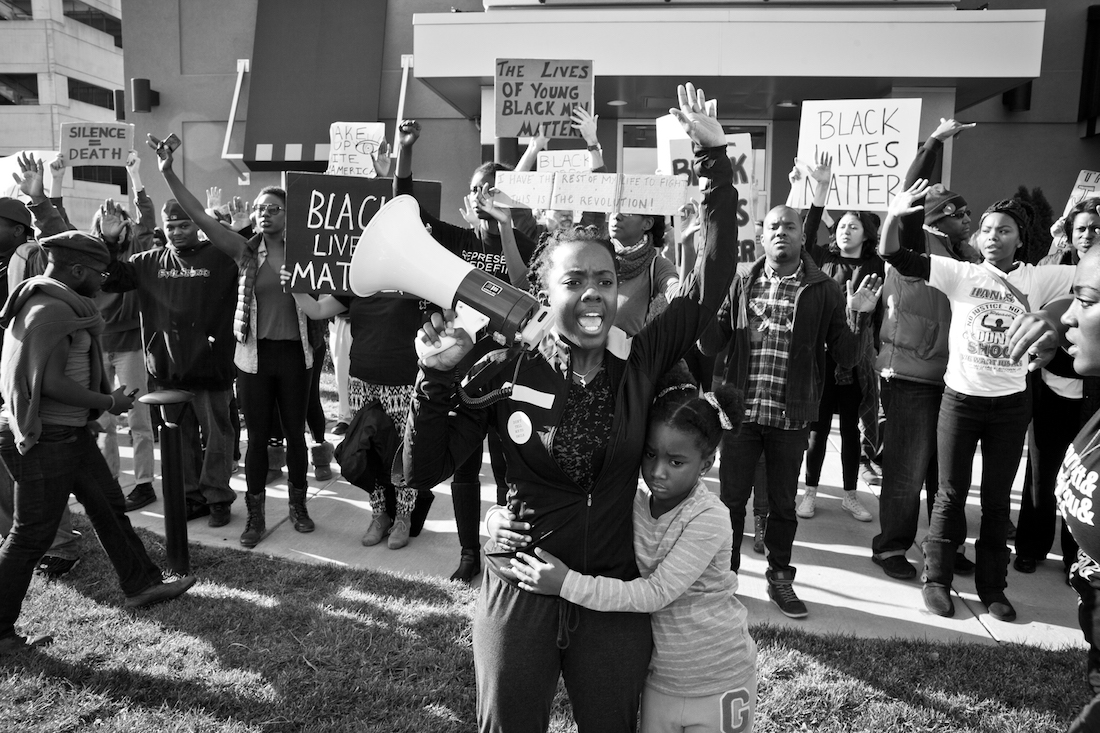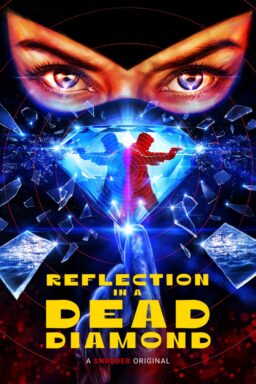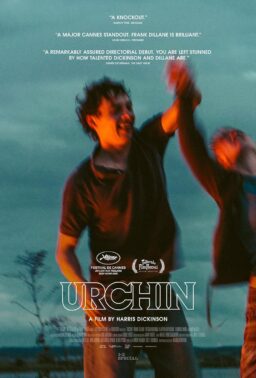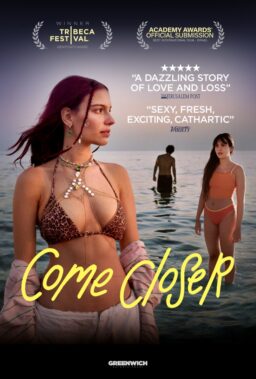A great deal of us do not know what it was like to be in Ferguson, MO after Mike Brown, an unarmed teenager, was killed by police in August 2014. We saw snippets through helicopter overhead shots and from the perspectives of out-of-town reporters, which in hindsight creates a cruel generalization of people who are collectively experiencing a tragedy: This is their home, this is where people love and where they work, and now it has become a war zone of a stolen narrative. As for social media, while residents were recording what they were experiencing, they were often passages in an ever-updating timeline. Unless you followed the hashtags, the first-hand experience of being in Ferguson could easily be lost with one swipe.
The miracle of “Whose Streets?“, a documentary that will assuredly be one of the most important and most emotional you’ll see this year, is that it tells the story of Ferguson from the community’s perspective. Co-directors and activists Sabaah Folayan and Damon Davis create one collective, chronological voice from an endless number of tweets, photos and videos, along with 400 hours of footage. It’s not a doc that’s compromised of the standard talking heads and subjective interviews. Instead, it’s cinema verite at its most electric, with people of the town sharing their long-unheard thoughts about what their community has turned into in the face of injustice, and demonstrating their passion in what they want to do about it. With such a focus, “Whose Streets?” restores to the public perception that which was not shown in headline news: how Ferguson was turned into a war zone by militaristic police force seemingly overnight, how Mike Brown’s murder was met with love and unity far more than destruction.
The movie has a significant historical facet, too. As it captures the daily lives of activists within the community like Brittany Farrell, Tef Poe, David Whitt and Kayla Reed, “Whose Streets?” also shows the utter humanity within the ever-growing Black Lives Matter movement, and is one of the very first films to document it.
RogerEbert.com spoke with Folayan and Davis about their incredible new documentary, how they told a micro story that tells a macro story at the same time, their interest in presenting humanity instead of creating empathy and more.
I should let you know that the first time I saw your film I was a mess during half of it.
DAMON DAVIS: Me too, me too. [Laughs]
So when you’re making this movie, are you driven more by trying to get the story out there or is it the emotions of it, how it feels and what you want to say?
SABAAH FOLAYAN: I think it’s all of the above. Getting through production was much more about, “We have to get this story out.” It was hard because we are not separate from this situation, we lived through all the same things that all the people in our film lived through. And so to be putting ourselves in that position of taking on a third party stance, that we’re going to watch and observe, that we’re going to ask you emotional questions, we’re going to ask you to relive those moments, it was kind of like, we just had to go on faith that this was really, really necessary. It was really really hard to do. And I also give props to our co-producer, Chris Renteria, because he was really the person who was doing the logistics and made sure we were on time and had rides, and had waters. And so producing in that kind of environment is a whole different ball game, and I think that it was really the importance of the story that drove us forward during that phase. And once we got into the edit and we were able to get a distance from the daily protesting and a little bit of distance from just seeing the people in the film everyday, I think for me at least it opened up a little more mental space to think about this as a work of art, and think about this as a story that kind of. And I also have to commend our editor, Christopher McNabb, and our assistant editors, people who sat and watched every second of the footage and combed through the most important moments and were just there with it.
How much footage?
DD: We had about 400 hours in total. It’s very emotionally a big thing for me, because I live there and I still see people, and I was living there while we were going. It was very good for me when I would come to New York. Looking back, I didn’t like it as much, but if I hadn’t done it, I probably would have unraveled. So it was a good thing to come there, be there for a while, come back. But like you were saying, it’s very hard for me to watch it. Even the good parts. It’s so much emotion welling up, just remembering, you know, just being there, it’s a difficult thing. But I would not take it back, for anything.
It sounds like that space is not just with the people who have so much aggression coming at them, but it’s about you finding peace as filmmakers too.
DD: Yeah, that’s real, so you can breathe.
I can imagine the edit would have been crazier if you had been there the whole time.
SF: I think it would have been.
DD: Things kept happening, and people were going to jail and dying. It hasn’t stopped. The backlash for the people who stood up is still a real thing. But we needed that space.
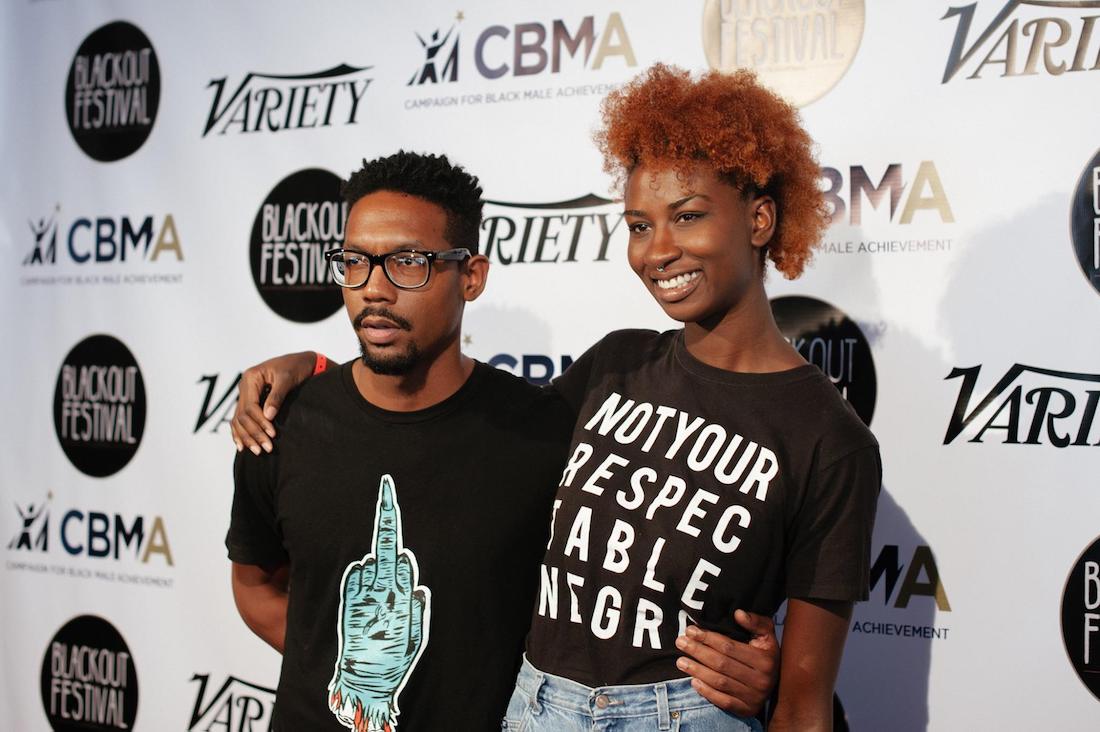
What excited you the most, and also scared you the most, about taking on this huge endeavor?
DD: For me, it was the same thing, it was being from the place and being able to tell the story, and being able to be a part of telling the story. There was a very exciting moment, like, “I get to do this,” and that rarely happens with people, it’s usually somebody just coming in and pointing the camera at people. So, that was a big deal. But it was also like, you represent if it goes wrong, you the one, “You said you were watching out for us.” It’s a balancing act, for me, personally. It was about being a part of the team that would tell such a big story and such an important story, historically and for black people and for America in general.
SF: I mean the most exciting thing for me just was the journey of it, and feeling like I was doing this thing where all of these skills that I had from different work and life experiences were being called on. I was able to apply them to something that was really meaningful. And I think the scary part was just diving into this whole new industry, and all of the sudden there’s so much at stake and there’s budgeting and all of these different things. What was a passion project to start with, a lot of other people have a stake in, and so, I think there’s the natural fear of getting it wrong and letting down people who have different interests. But I think it was more exciting than scary. But another scary thing was the environment that we knew we’d be releasing the film into, and the kind of permission that people feel to be overtly racist and bigoted now and knowing we have a polarizing film and what kind of attention that could bring to us.
DD: Yeah, we’re having a great time with that.
Let’s talk about that. Can you elaborate?
DD: I mean, yeah, I live in Missouri, bruh. [laughs] I think that’s enough elaboration. I live in the heart of, it’s been red since its inception, and there’s a reason why we have a movie. The environment, the storm is real there. And that’s something I think about a lot. And you know, I haven’t had any physical violence but I get a lot of shit. I get shit sent to me, and so it’s just like, yeah. I’m not a fan of Hillary Clinton neither, but it’s a very different thing when people can be like, as Sabaah was saying, very blatant and very open about being evil, and not fearing any consequences. And I mean, the guy didn’t get any consequences, so it doesn’t really deter anybody from doing the same thing. I live in a place where anybody can carry a gun for any reason at any time, and not have a permit. Just ridiculous factors. So, needless to say, when I got to Chicago I started checking out the pricing on housing. That was a real conversation in the airport. But it’s real. But don’t think that New York is any different, or that LA is any different. This is an American thing, it is just much more blatant where I live at. We played it at the True/False, that’s Missouri.
So that’s a Q&A.
DD: The Q&As, this is the thing about film festivals. People come, they like movies. We’re not showing it to the reaaalll white folks, you feel what I’m saying? But even with that, I got people that walked up to me, and me and Sabaah had a text conversation, and she was like, “These people are so much nicer! They’re way nicer than St. Louis people.” And it holds true, because while she was texting me that, I was sitting in a place with some people from St. Louis that wanted to tell me how I was, all the things I was doing wrong, how I need to think about it differently. It was just like, a constant thing. And more than anything, people ask me what they should do and what they can do, you’re supposed to teach people how to walk through life. And it’s just exhausting. Those conversations. Like, we did the movie. Figure it out. Like you write the book … read the book! Read the book, I wrote the book. Am I supposed to give you Cliffs Notes too? But I don’t think that’s going to slow down at any point.
It’s early now but you’re going to be playing this movie to whiter—wider and whiter—audiences, definitely.
DD: Interchangeable, in this country.
If anything is going to get people to get it through empathy, it’s this movie. So, empathy—was that something you were really driven by or conscious of?
SF: I think we’re very conscious of it, but I think like, empathy is … this is something we grapple with a lot.
DD: [laughs] Yeah.
SF: Empathy is kind of this, unquestioned mission statement that a lot of filmmakers take on. We have to build more empathy, we have to build more empathy. But there are some relationships that are assumed in that, that we deeply question. The assumption that the core audience is someone who does not understand, and the assumption that by them understanding that they’re going to act differently. But those two assumptions are not necessarily … and so for us, what really feeds me after these Q&As, we get some of the same questions. We get some good questions, sometimes we get people who ask, “Why didn’t you interview any police?” Well, actually, we talked to the mayor, the police chief, the city manager. This is not the movie that we made. But I think what feeds me when I get those interactions, after the Q&A and that one black woman will come up to me and she’s crying me how this is everything that she’s been living through. We were really confident that if we could make the film that was going to speak to people who live through and speak truth to them, that everyone else would be able to see the same truth.
DD: Absolutely. And it may have started that way, but the more you work on it, that shit shed, that whole, we can change other people’s minds. And going back to what Sabaah said about empathy and filmmakers, that’s something that artists in general think that shit is going to work. And the older I get, I hate to sound like—I’m not old—but the more I walk through life, I find it more and more difficult that empathy is even a factor anymore. And I feel like people have spent their lives trying to build empathy, great people have spent their lives trying to do it. And it doesn’t fit in. So, I’m concerned with speaking to the choir, and trying to get them, because those are the people who show up to church every Sunday, those are the people that need saving. And I think we spend too much time trying to breathe empathy into people. I think the people that see it, if they can see humanity in people, they’re going to see it. And if they don’t, then I’m not finna lose no sleep over those folks.
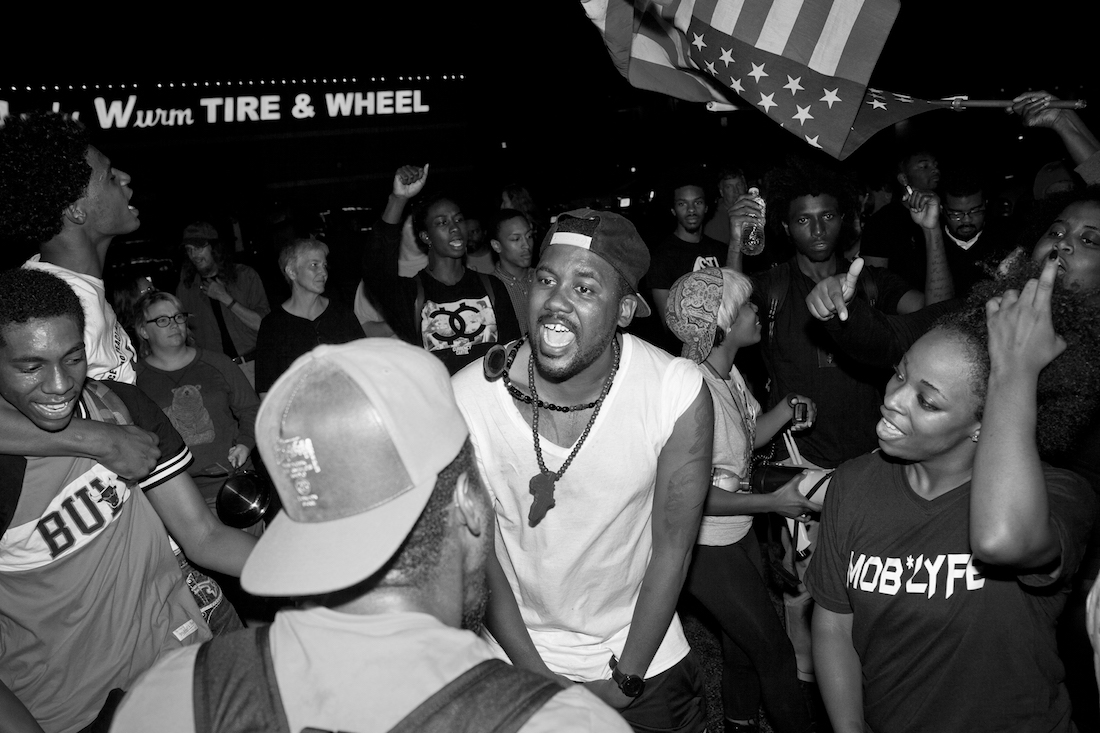
You present the humanity and that’s all you want to do.
DD: I’m much more worried about the black people seeing it and them seeing the humanity in themselves, and finally seeing themselves represented than I am about the overarching white audience seeing it.
SF: And that’s really important and it’s not just kind of self-reflective, it’s also that we all learn in the same classroom, we all are exposed to the same conditioning. I consider myself an extremely empathetic person, and I find it really hard to walk through Manhattan because of that.
DD: [laughs] I hear that.
SF: And yet, even with all of that empathy, I cannot say that I am doing anything in particular to help those homeless people, I would if it were in my power, but I have to do what’s in my power. This film is mostly for people who … there’s something in their power that they can do and they need that energy, they need to be activated, they need to see their work in a larger context, they need to see it connected to historical legacy. They need to know that it’s valid. Because a lot of us, especially those who are connecting on social media, people who are young, who are being told that this is not a real movement, and that we’re not doing it like the civil rights movement, and that it’s just a moment, that it’s just a trend. So we just wanted to take the energy of this movement and bring it to … just represent it in the way that it really is and really feels when you’re engaged and when you’re standing with people who are very thoughtful about it, who are very analytical, very strategic. We just wanted to expose that and hopefully it speaks for itself.
I’ve seen documentaries that have #BlackLivesMatter as the epilogue. But this is the first one about the movement.
DD: From inside, too.
SF: I was just on a panel with Jon Else, who worked on “Eyes on the Prize.” I got chills because “Eyes on the Prize” is the documentary about the civil rights movement. And they had such a different approach, they had such a different challenge, different ways that it started. But I think that the energy and what they wanted to do, and I think it’s changes in technology and the way that we are connected, just allowed us to start.
Going back to the process, you collected all of this footage. I can imagine that’s maybe the craziest thing about the production. I know you could answer this for 30 minutes, but what’s the short-ish answer about how you collected everything, all the tweets, photos and videos?
DD: That’s not a short answer.
SF: It took a lot of leg work. We had an amazing archival producer, who helped us with the news footage and the journalistic stuff and we had a really dedicated editor, like I mentioned before. We both personally spent a lot of time just digging through.
DD: Twitter.
SF: And we started our archival search in about August 2016, that was a huge mistake.
DD: Don’t ever.
SF: Don’t ever wait. Any filmmakers, do not wait until post-production to start looking for—because we had been following, we’d seen all of these things that were out there, but we didn’t realize. We searched through millions of posts.
The film doesn’t feel like you couldn’t find the right quotes.
SF: That’s the magic. Well, they say that 80% of the edit is done in 20% of the time, that may be true.
DD: From what we saw. Still, don’t try that shit.
SF: [laughs]
DD: I don’t want to be responsible for anyone hurting themselves, or being hospitalized.
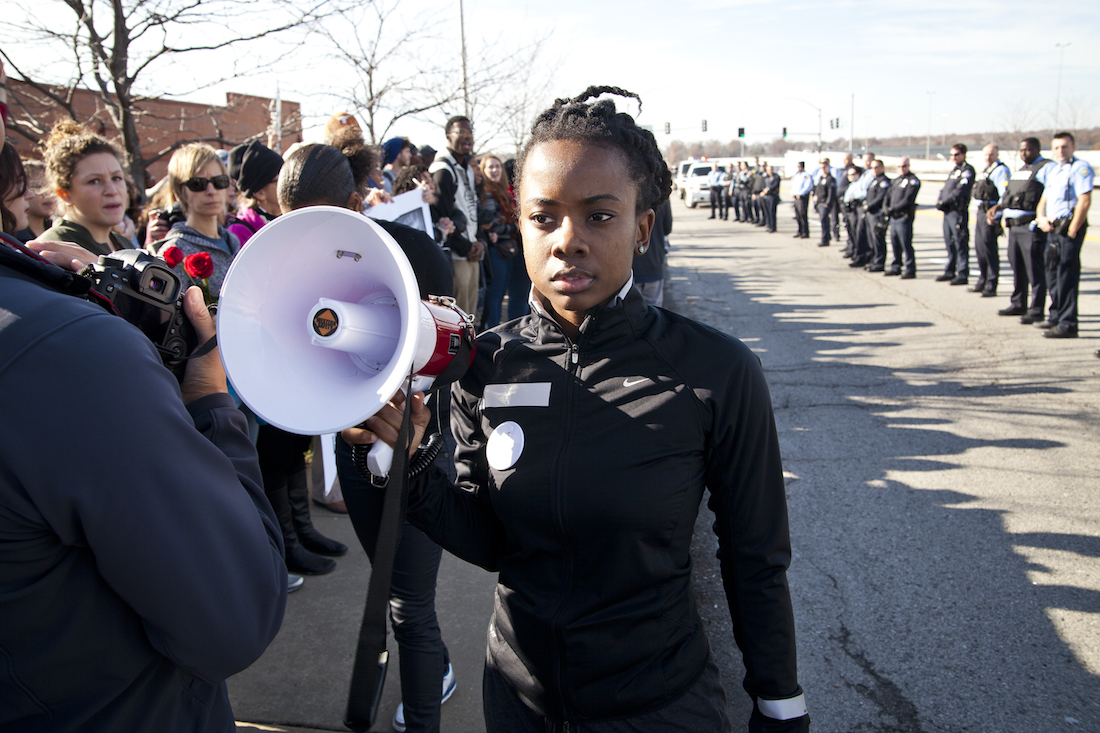
With editing, were there a lot of different edits, or did it have a lot of different focuses? And when did Brittany come into focus? I think she has the most footage.
DD: She had the most complete storyline. And she also opened up to us unlike anyone else. But at one point, we were following seven different people, including myself. And we had two-hour movies, for each person. In assembly, about half a day. And then we had to whittle that down. And that’s just the people, that’s not the chronological timeline of what happened.
SF: Before we started archival, we had a 90-minute rough cut. We just had to kind of let the story tell us. And I think it’s funny, because I think we kind of got to back to what we imagined at the beginning, but it just took so many different iterations, there were day counts where the chapter markers are, and there were all of these different things.
DD: And I also want to emphasize the amount of time that we did this in. Documentaries get made in ten years. We was on the accelerator course, because we knew this movement was happening, and it’s happening live. This is an important tool for organizers to see, live, while it’s still going on.
SF: And we felt like there were a lot of journalists who came to Ferguson, a lot of people who had their stories to tell, and we felt like there were a lot of important perspectives on this, but we know from being there that there wasn’t anybody else following the people that we were following, there wasn’t anybody else asking the questions that we were asking. And the people that we followed are the people that really, who were and continue to be at the heart of what happened. We felt like we went for the most essential truth about what was going on. It felt like a privilege to have that access, and it felt like we had to turn it around so that other people could have that.
DD: And we did it from a St. Louis standpoint, too. A lot of people come in and they looking at it from where they come from. And we were really intentional about making it a micro story that would tell a macro story at the same time, and focusing on this and why this and the timeline and why this happens now. Not like it’s a freak accident and these things are unrelated. And you know what I mean? When you’re not embedded in things, you don’t know, and you’re there to take and get your story in and get out of the way. But we were living it, we went through it.
SF: And I think, my creative background is in writing, not in a published way but my own. And I think one of the things at the principles of that is the more specific you can be the more universal the story will become. If you can describe the sensation of rain on a hot asphalt, you’re going to make an experience that everyone can relate to. And that’s what we wanted to do with the film, by showing Brittany and her daughter eating cereal. These little moments, but we had to focus, it had to be St. Louis, it had to be really specific. It couldn’t be some national survey of the movement, or we wouldn’t have gotten those universal truths.
It’s that question of something should be universal to speak to people, or should it be specific.
DD: I think specific is universal. Yeah.
Were there any documentaries that inspired what you wanted to do with this?
SF: When I first started this, I’ll be honest—my film vocabulary was very, very low. But I would say that as we got into post-production is when we got to delve into documentaries. And weirdly enough, Wiseman’s “The Hospital” and “Trouble the Water,” the way that they were able to work with chronology. Not specifically, just inspired me to feel like it was possible what we were trying to do, we had these two different modes where it was like, crazy protest stuff in 2014, and then personal life stuff in 2015, and how were we going to make this one. Those are two that come to mind.
DD: “Cutie and the Boxer” was a big one for me, we was talking about that one from the beginning. We was talking a lot about doing animation, and I’m a visual artist, and that was one of the things that we linked on, was like, “Yeah, let’s try it.” And I just liked the way that “Cutie and the Boxer” used animation. But also, I like how close the camera is in moments when they’re just being themselves too. When they’re just sitting there eating food, and they’re talking back and forth. I really like that documentary, and that was one we kept bringing up when we first started. That’s the one that sticks out to me.
SF: I think “The Square.”
DD: Yeah, because it tells the story of a community movement.
One thing I love about the interviews of “Whose Streets” is that there are a lot of scenes with people in cars.
SF: [laughs] We were just laughing about that!
Which is an example of getting those moments.
DD: And that’s also when people loosen up. They’re trying to not hit anything, so they’re telling you the truth.
And it comes out with these amazing statements from people. Was that a coincidence?
DD: It was not a motif we went into.
SF: I think it was more like, we were going to roll all of the time, and I think to have people be really comfortable in the car. They’re not looking at the camera, so they just say that stuff. And we didn’t want to do any typical looking interviews, we tried to avoid that.
DD: Yeah, some talking head shit.
Thank you for avoiding that. I didn’t miss it.
SF: So it was like, we can talk to people while they’re doing things they would normally do, and it won’t feel like you’re getting lectured as much.
And you get things from them that they’ve been thinking about for a long time.
DD: They’re living through the moment. We caught some people making realizations about things, where they stood on one side before, and we was in the mix. It was real time, real life.
“Whose Streets?” is currently streaming on Hulu, and available at a discount rental price on digital platforms.

